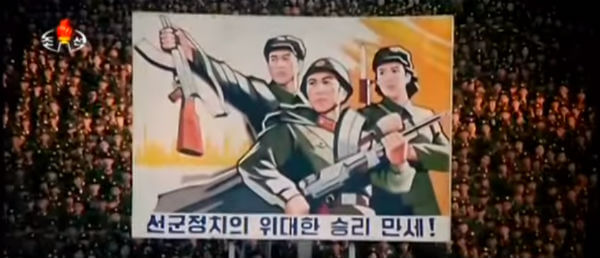That was a question posed by Fred Ryan, publisher of the Washington Post, in a meeting between Donald Trump and the paper’s editorial board on Monday.
You mentioned a few minutes earlier here you’d knock out ISIS — you’ve mentioned that many times. You’ve also mentioned the risk of putting American troops in a danger area. If you could substantially reduce the risk of harm to ground troops, would you use a battlefield nuclear weapon to take out ISIS?
Trump: I don’t want to use… I don’t want to start the process of nuclear. Remember, one thing that everybody has said, I’m a counter-puncher.
Note that Trump wouldn’t rule out using nuclear weapons — he merely said he wouldn’t start the process.
Last month Reuters reported that the theft of radioactive material last year “has raised fears among Iraqi officials that it could be used as a weapon if acquired by Islamic State.”
Fears of a nuclear-armed ISIS were fueled today by Britain’s defense minister who confirmed, “this is a new and emerging threat.”
If ISIS was to use a dirty bomb, or, so to speak, start the process, Trump seems to have just strongly inferred that he would throw a “counter-punch” with a tactical nuclear strike. Indeed, maybe the existing warnings are sufficient for Trump to see a process in motion.
It’s hard to imagine a strategic blunder of greater proportions as this would subsequently be seen by friends and foes alike both as an unjustifiable use of American power (deterrence means nothing to ISIS) while also opening the door to a new age of unleashed nuclear force.
That the Trump team is oblivious to the value of refraining from using nuclear weapons became evident in December when campaign spokesperson Katrina Pierson said on Fox’s The O’Reilly Factor: “What good does it do to have a good nuclear triad if you’re afraid to use it?”
Towards the end of the Post interview, Trump returned to the issue of nuclear weapons after being asked:
Do you think climate change is a real thing? Is it man… human caused?
Trump: I think there is a change in weather. I am not a great believer in man-made climate change… not a great believer. There is certainly a change in weather that goes, and if you look they had global cooling in the 1920s and now they have global warming, although now they don’t know if they have global warming. They call it all sorts of different things — now they’re using extreme weather I guess more than any other phrase. I am not — I know it hurts me with this room and I know it’s probably a killer with this room — but I am not a believer (perhaps there’s a minor effect) but I’m not a big believer in man-made climate change.
Don’t good businessmen hedge against risks, not ignore them?
Trump: Well, I just think we have much bigger risks. I mean I think we have militarily tremendous risks. I think we are at tremendous peril. I think our biggest form of “climate change” is — that we should worry about — is nuclear weapons. The biggest risk to the world to me — I mean I know that President Obama thought climate change — to me the biggest risk is nuclear weapons. That is climate change. That is a disaster. And we don’t even know where the nuclear weapons are right now. We don’t know who has them. We don’t know who is trying to get them. The biggest risk for the world and for this country is nuclear weapons — the power of nuclear weapons.
Trump’s thinking process is primitive.
As is sadly commonplace, he doesn’t understand the difference between weather and climate. He uses the language of an anti-intellectual who conspiratorially believes that terminology is designed to bamboozle the uneducated — as though scientists keep on tossing out new phrases all of which simply mean changeable weather. He thinks climate change and extreme weather are interchangeable terms.
But recognizing that as an expression climate change has an emotive yield — that its users hope to generate alarm — he uses it as he has used it before, to circle back to nuclear weapons.
Rather than convey that he truly understands the gravity of having control of a nuclear arsenal, Trump hints that he’s starting to get a tantalizing glimpse of what it might mean for him to grasp that power — and use it.
Would he launch a nuclear strike against ISIS? Trump clearly sees the maximum value in leaving the world guessing.



